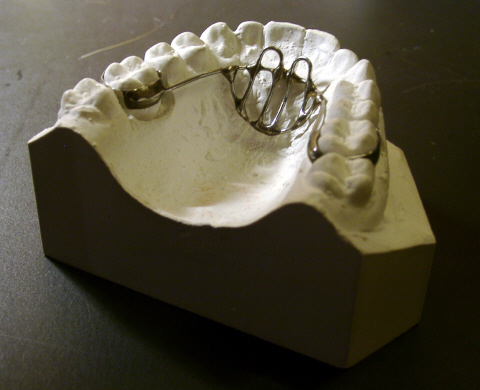|
There are numerous approaches to treat chronic (habitual) thumb sucking. They can be bundled into three categories:
•Behavioral - (or behavior modification) - this approach suggests rewarding a child for not exercising the habit;
•Aversive - this approach generates negative sensations when the habit is exercised, such as bad taste, pain or major discomfort;
•Mechanical - this approach prevents or interrupts the process of thumb sucking.
Usually, the first attempts made by parents to stop thumb sucking belong to the first category - behavioral. There is professional help available from speech pathologists and child psychologists to explore this approach. However, it is our understanding that this approach fails because children often put their thumb(s) in their mouth unconsciously. Whether during the day or when resting at night, frequently the child will not notice that they are thumbsucking because their mental control over their behavior is not at work.
Aversive approaches can be divided into two categories: home remedies (such as bad tasting products and band aids, which usually don't work) and fixed appliance therapy, which includes intraoral devices (cribs or rakes), offered by dentists. Dental impressions are taken before these intraoral devices (see picture at right) are fitted in the child's mouth and glued to the child's molars for a six to twelve month period. These devices are rather expensive and they force children to alter their speech, and also make it difficult for them to eat certain foods (like peanut butter). A clinical evaluation recommends that intraoral devices should be used as a last resort: -"ThumbGuard™ provides a low cost option before this therapy needs to be tried".[1]
The mechanical approach category consists of devices, which are designed to prevent or interrupt thumb sucking, which appear to be the soothing factor for children. Examples include a sock over the hand or an ace bandage wrapped around the child's elbow. The latter would prevent the child from bending his/her arm and reaching their mouth. But it also restricts movement in a very negative way by making the sleeping process very uncomfortable at night, also limiting the child's ability to play during the day.
The latest and most successful version of the mechanical approach is ThumbGuard™ - safe and efficient, listed by the FDA as a medical device. Made out of medical grade plastic material, ThumbGuard™ is soft and clear. It does not restrict the child's ability to play and it doesn't cause any major discomfort. It interrupts the process of sucking by breaking the vacuum created by sucking, thus removing the child's pleasure without creating any negative feelings, which can be interpreted by a child as a punishment. Treatment with ThumbGuard™ usually lasts four weeks and has very high success rate.
We are so confident that our product will stop thumb sucking, we offer a 30 day money back guarantee (for U.S. customers only). Please go to the section "ThumbGuard™", under Products, where details of the treatment are discussed.
If a child sucks his/her fingers, we can help with our FingerGuard™ - a device designed similarly to ThumbGuard™.
|
